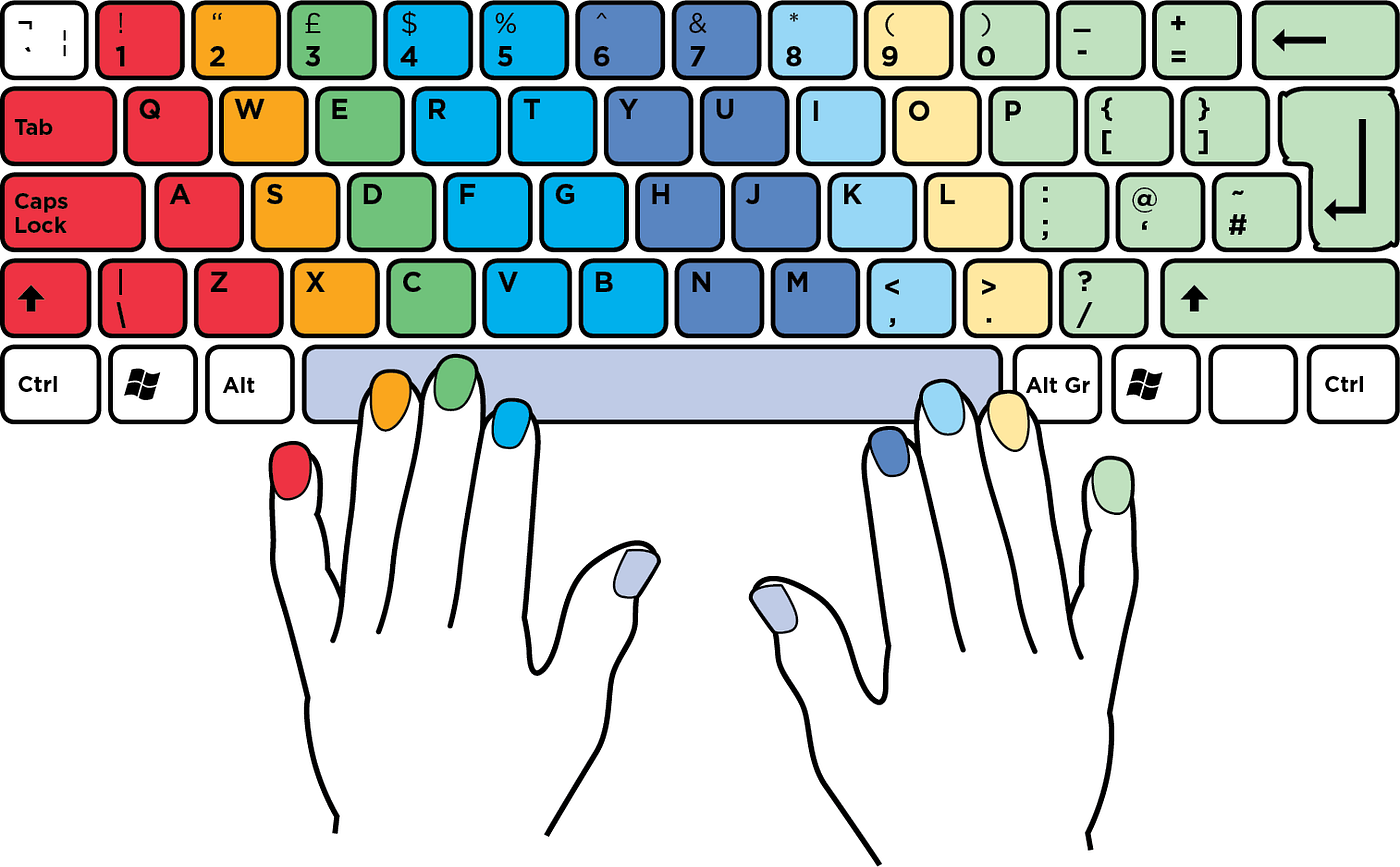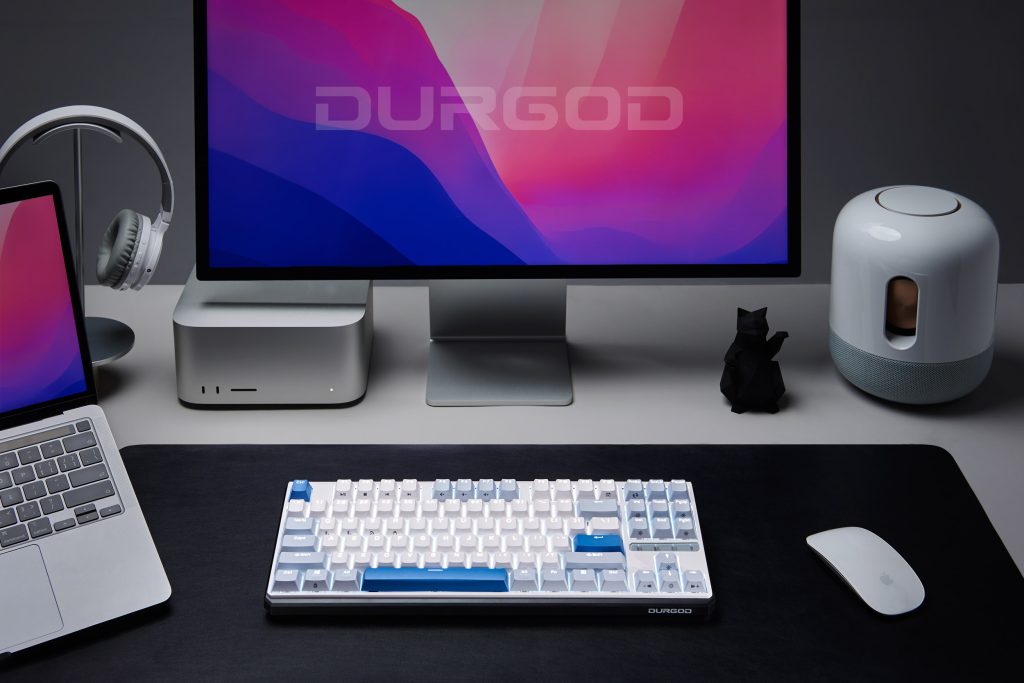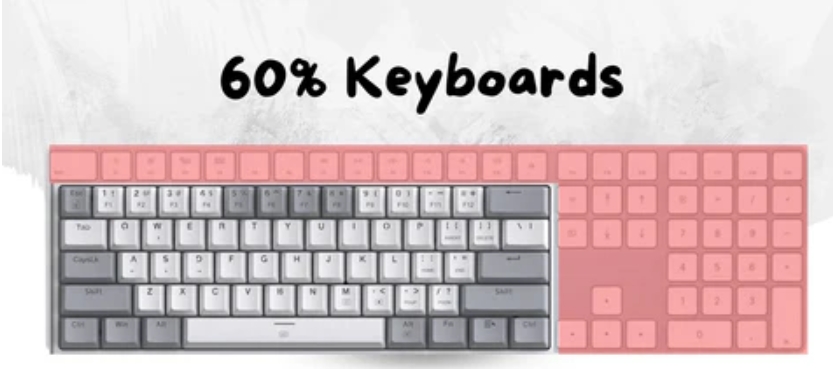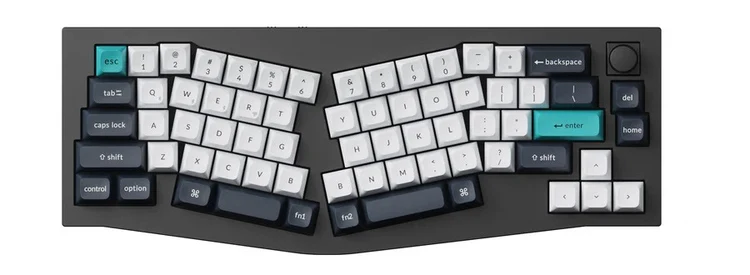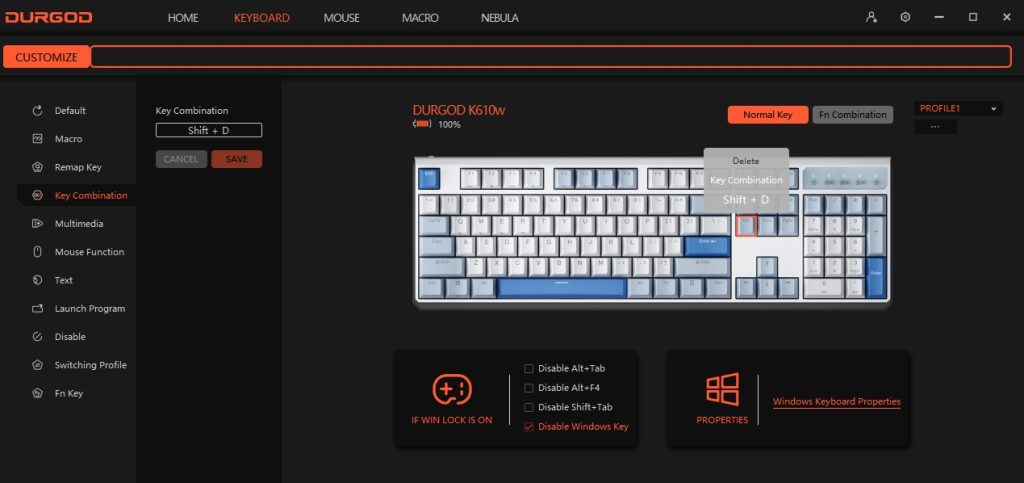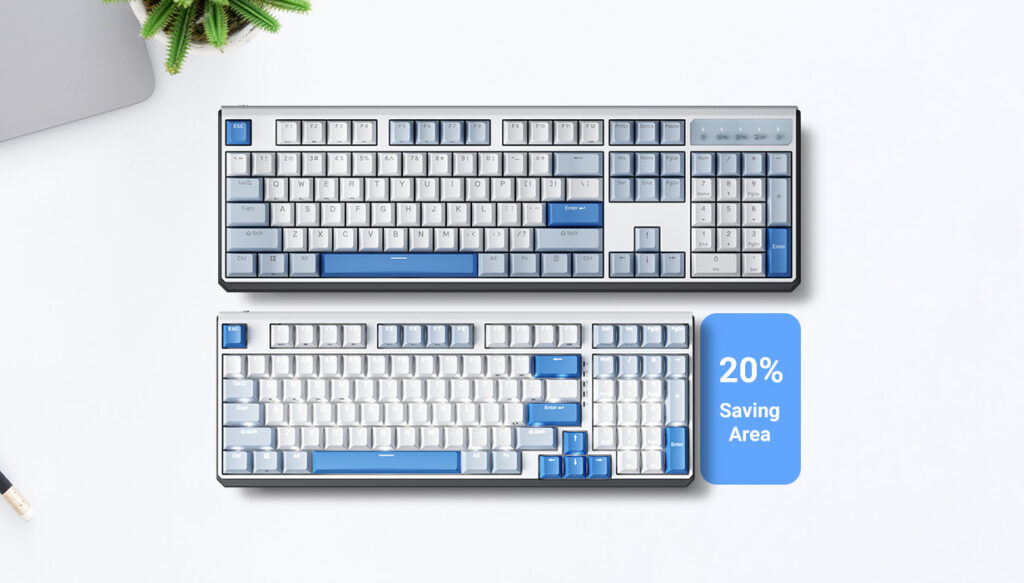Touch typing revolutionizes typing by enabling typists to memorize the keyboard layout, allowing them to type swiftly without looking at the keys. This method leverages all ten fingers, assigning each to a specific section of the keyboard for efficient and rapid typing.
Learn touch-typing via HERE! Enjoy the fun of typing without looking at the keyboard all the time!
Key Elements of Touch Typing
- Finger Placement: Assigns each finger to designated keys, enhancing typing efficiency. For example, the left index covers ‘F’ and ‘G’, while the right handles ‘J’ and ‘K’ on a QWERTY keyboard.
- Home Row: Acts as the baseline, where fingers rest on the central row of letters (ASDF for the left, JKL; for the right) and return after pressing other keys.
- Muscle Memory: Fundamental for proficiency, allowing fingers to automatically find keys, streamlining the typing process.
- Ergonomics: Emphasizes proper posture and hand positioning to minimize the risk of strain injuries.
Benefits of Touch Typing
- Increased Productivity: Enables faster typing speeds, significantly boosting work output.
- Accuracy: This leads to fewer errors, thus elevating the quality of typed documents.
- Cognitive Load Reduction: Frees up mental capacity to focus on content quality and creativity.
- Health Benefits: Proper techniques lessen the strain on the eyes, neck, and wrists, promoting better health.
Learning Typing
- Practice: Essential for improvement, with various online tools providing structured training.
- Patience: A gradual learning curve necessitates patience as skills develop.
- Posture and Ergonomics: Vital for avoiding discomfort and potential injuries.
- Consistency: Regular, consistent practice outperforms irregular, extended sessions.
Challenges and Misconceptions
- Initial Slowdown: Transitioning to touch typing may temporarily reduce typing speed.
- Misconception of Difficulty: Despite common beliefs, touch typing becomes manageable with regular practice.
Application in Various Fields
- Professional Settings: Enhances efficiency across most office roles.
- Programming and Tech Fields: Crucial for coding and data management tasks.
- Education: Assists students in efficient note-taking and essay composition.
Conclusion
Touch typing stands as a pivotal skill in today’s digital world, offering substantial benefits in efficiency, accuracy, and health. Though mastering it demands dedication, the rewards, including enhanced professional productivity and comfort during prolonged typing activities, are significant. As digital interactions and computer usage persist in dominating both work and leisure, touch typing emerges as an indispensable skill for keyboard users everywhere.
For more knowledge of mechanical keyboards, visit DURGOD.



